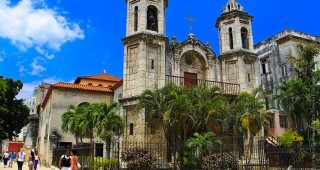
Cementerio Chino LH  3
3
Chinese immigrants were promised rivers of gold on their arrival in Cuba, but in reality they were confined to barracks in abject poverty, where conditions were brutal. Many of them thought of returni …

Iglesia del Santo Cristo del Buen Viaje LH  3
3
Erected in 1640 simultaneously with the Plaza del Cristo around the Ermita del Humilladero–the final station of the Vía Crucis or procession of the Stations of the Cross on Good Friday, which started …
 ColonialAdmission: FreeOpen: 9am-6pm, Tues-SunVillegas e/ Lamparilla y Teniente Rey, Habana Vieja
ColonialAdmission: FreeOpen: 9am-6pm, Tues-SunVillegas e/ Lamparilla y Teniente Rey, Habana Vieja 
Cementerio de Espada LH  2
2
First called Cementerio General de La Habana, the Cementerio de Espada was built after the Spanish authorities issued a Royal Edict banning burials in temples because it was considered unhygienic. The …

Patronato de la Casa de la Comunidad Hebrea y Gran Sinagoga bet Shalom LH  2
2
This is the biggest of Cuba’s five synagogues and is considered one of the most important architectural works in the country. It has a hard-looking exterior with vertical lines that make reference to …
 ModernI #241, entre 13 y 15
ModernI #241, entre 13 y 15 
Iglesia y Convento de Santa Catalina de Siena LH  2
2
The Convent of the Dominican Sisters of Saint Catherine of Siena moved from its former site in Old Havana to a new and prime location in El Vedado on May 13, 1918. The construction of the convent and …
 EclecticPaseo entre 23 y 25
EclecticPaseo entre 23 y 25 


